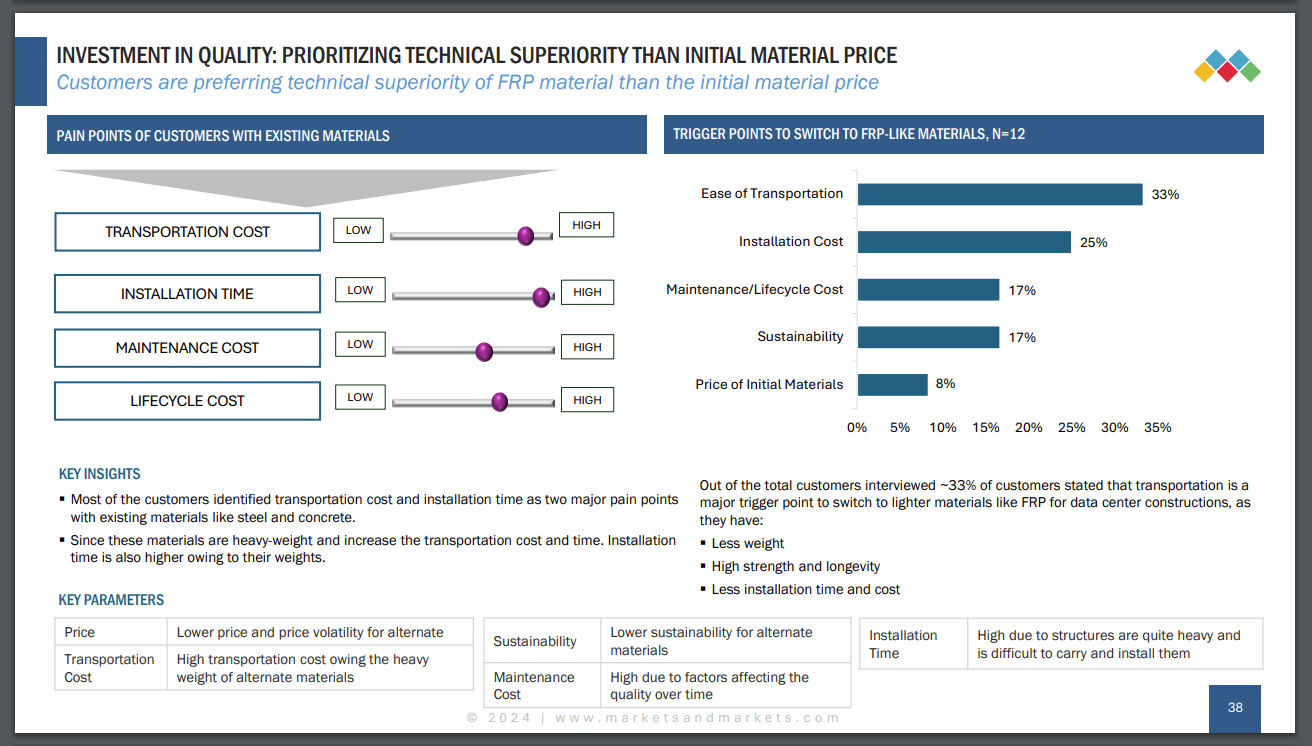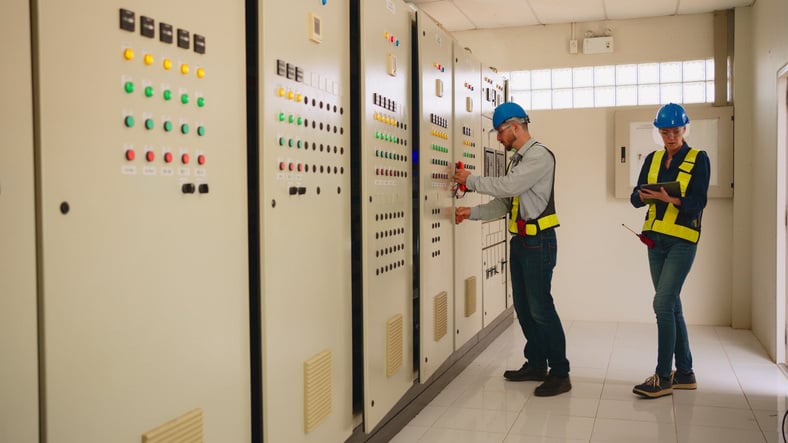Data center operations can be costly. While energy consumption often takes center stage, data...
Reduce Your Data Center Maintenance Costs with FRP
Data center operations can be costly. While energy consumption often takes center stage, data center maintenance and infrastructure costs can significantly impact the bottom line over time. This blog explores how fiberglass reinforced plastic (FRP) can reduce the cost of maintaining, updating, and replacing building materials and components within data centers.
The High Cost of Data Center Operation & Maintenance
Operating a data center is no small feat. Costs can skyrocket, especially for larger facilities. According to Granulate.io, a mid-sized data center can cost $200,000-$500,000/year. A large data center with over 250 racks can easily top $1 million per year. While energy consumption is a major expense, the ongoing maintenance of the data center itself often gets overlooked. Initially, these costs might seem minimal, but over the 15-20 year lifespan of a data center, the cumulative impact of repairing and replacing worn-out building materials can be substantial. This is where the true hidden costs emerge.
FRP: The Low-Maintenance Champion
To effectively manage data center costs, minimizing maintenance is crucial. This is where fiberglass reinforced plastic (FRP) excels. Unlike traditional materials like steel, wood, aluminum, vinyl, ceramics, and rubber, FRP requires significantly less upkeep. Its resistance to corrosion, rot, biological degradation, and general wear and tear translates into substantial cost savings.
While regular inspections are recommended for any material, FRP typically only needs routine visual checks for signs of degradation or damage. Cleaning is simple, involving a mild detergent and water. Even repairs are often straightforward, using inexpensive FRP repair kits for minor damage. Consistent fastener checks complete the basic maintenance routine.
In the following sections, we'll delve deeper into the maintenance requirements of other common building materials to highlight the stark contrast with FRP.
How do Data Center customers feel about FRP? Lower maintenance/lifecycle cost lands in the top 3 reasons that they choose FRP as their preferred material.

How Do Other Materials Stack Up for Data Center Maintenance?
While FRP stands out for its low maintenance requirements, traditional building materials demand significantly more attention and resources. Let's break down the maintenance challenges associated with common materials:
Steel
Steel is susceptible to corrosion, a persistent issue in many environments. Regular inspections, protective coatings, and timely repairs are essential. Painting, cleaning, and environmental protection are also critical to prolong steel's lifespan.
Concrete
Concrete, while durable, is prone to cracking, spalling, and moisture damage. Regular inspections, sealing, and crack repair are necessary. Maintaining the integrity of concrete's reinforcing steel is crucial to prevent structural issues.
Aluminum
Although known for its corrosion resistance, aluminum can still deteriorate in certain conditions. Protective coatings and regular inspections are essential. Cleaning and repair of dents, scratches, and fastener issues are also part of aluminum maintenance.
Wood
Wood is susceptible to rot, insect damage, and moisture. Regular inspections, sealing, painting, and pest control are crucial. Maintaining proper ventilation and addressing issues promptly is essential for wood's longevity.
Vinyl
Vinyl is relatively low maintenance, but it's not entirely carefree. Regular cleaning, stain removal, and protective measures are necessary to preserve its appearance and functionality.
Rubber
Rubber flooring requires regular cleaning and maintenance to prevent dirt buildup and stains. Protective measures and periodic refinishing are essential to maintain its appearance and performance.

Key Areas for FRP Implementation to Minimize Data Center Maintenance Costs
To maximize the benefits of FRP, consider incorporating it into various components of your data center:
- Flooring Systems: FRP flooring offers exceptional durability, resistance to chemicals, and easy cleaning. Its non-slip properties enhance safety, and its open-grid design promotes airflow, crucial for cooling efficiency.
- Ceiling Systems: FRP ceiling panels provide fire resistance, acoustic benefits, and excellent durability. They also contribute to a clean and hygienic environment.
- Racks and Enclosures: FRP racks and enclosures protect equipment from dust, moisture, and corrosion. Their lightweight design simplifies installation and relocation.
- Walkways and Platforms: FRP walkways and platforms offer safe access to elevated areas while reducing maintenance needs.
- Corrosive Environment Areas: For areas exposed to high humidity, chemicals, or saltwater, FRP's corrosion resistance is invaluable.
By strategically incorporating FRP into these areas, operators can significantly reduce data center maintenance costs, improve operational efficiency, and extend the lifespan of their facilities.
Data Center Maintenance Made Simple With FRP
By investing in FRP, data center owners can allocate more resources to core operations, improve energy efficiency, and enhance overall facility performance. Embracing innovative materials like FRP is essential for building data centers that are not only efficient but also sustainable for the long term.
Explore Fibergrate’s product offerings and start building a data center that will last longer and ensure easier upkeep.
Topics: FRP, Data Center


